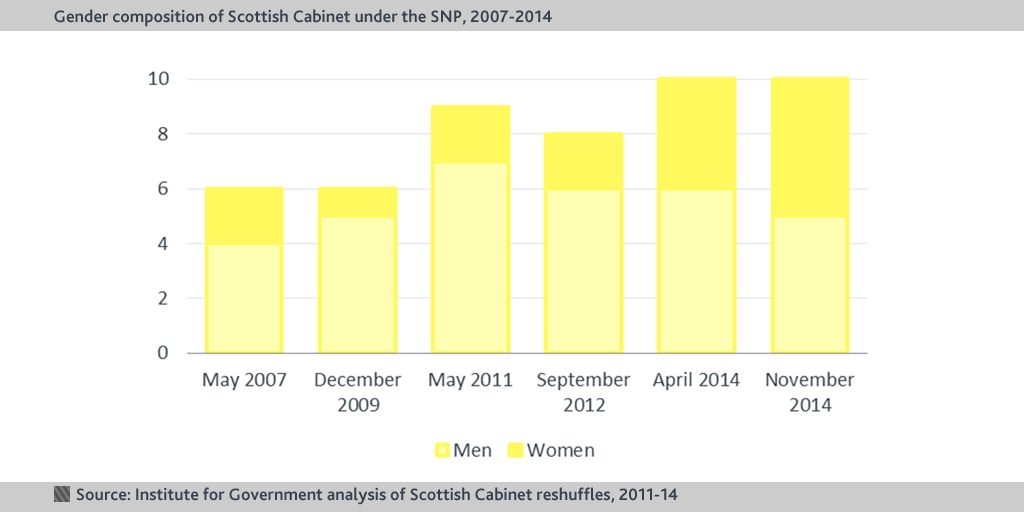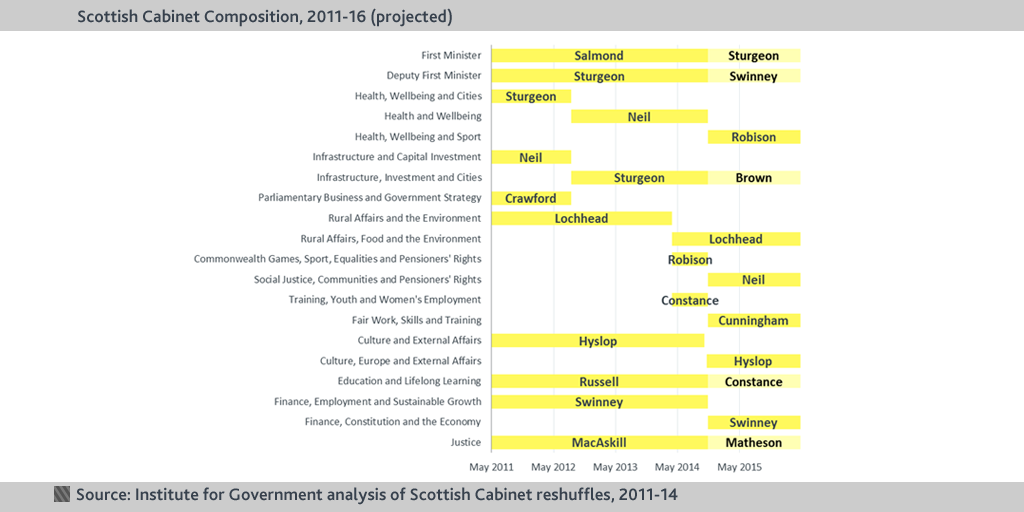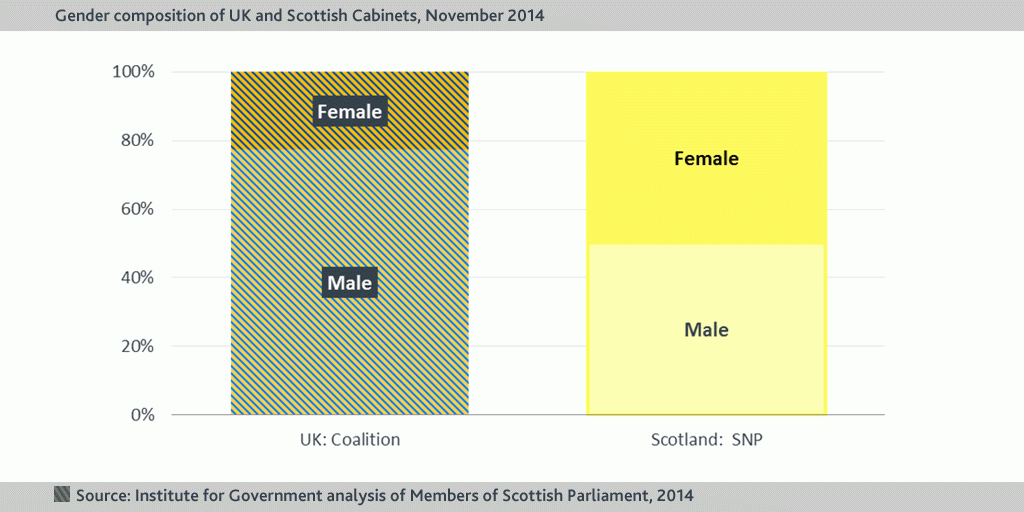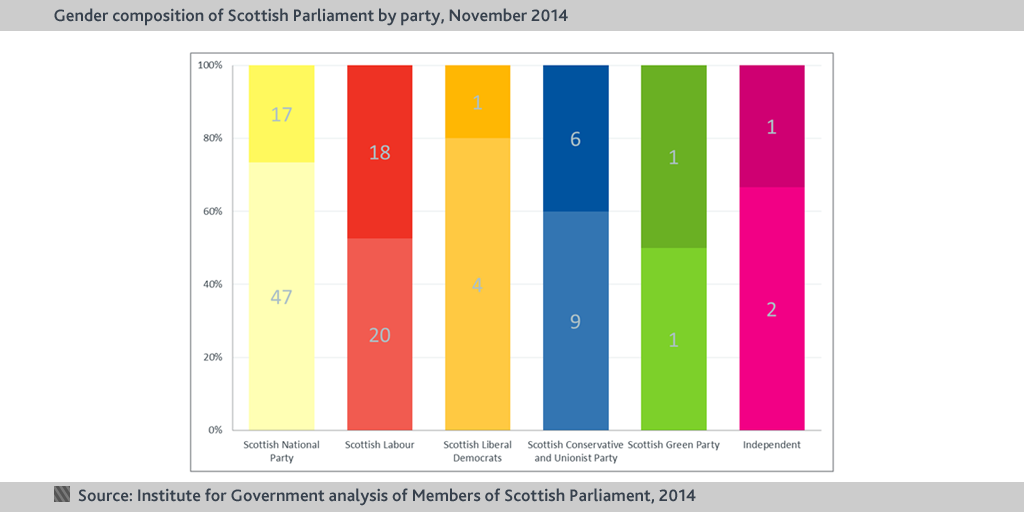Scottish Cabinet reshuffle: gender trouble?
Is the SNP winning the race to become the most representative party in Scotland?
Nicola Sturgeon has announced her new Cabinet today. Following her selection as Scotland’s first female First Minister, she told the Scottish Parliament that she hoped her presence in the top job would send ‘a strong, positive message to girls and young women – indeed, to all women – across our land’. But is the composition of her Cabinet, and her Party, sending the same message? And is the SNP winning the race to become the most representative party in Scotland?
Scottish Cabinet reshuffle: some old, some new. 



- United Kingdom
- Scotland
- Political party
- Scottish National Party
- Administration
- Cameron-Clegg coalition government
- Devolved administration
- Scottish government
- Publisher
- Institute for Government